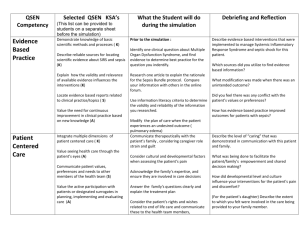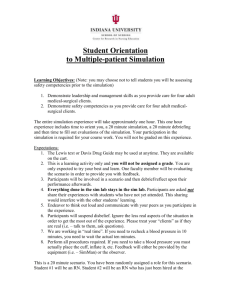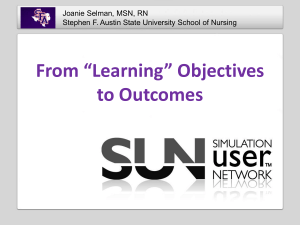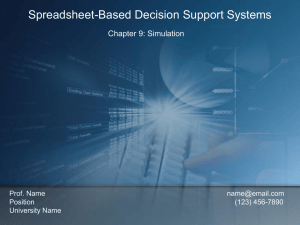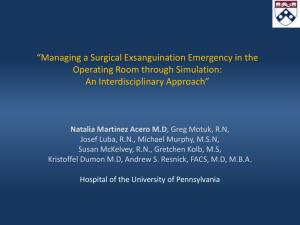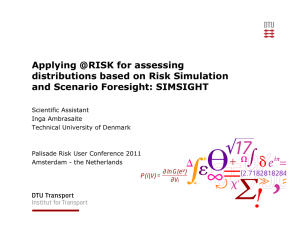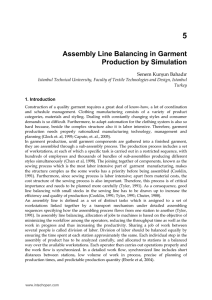Module 2509 Systems Software Mechanisms, Machine Architecture
advertisement
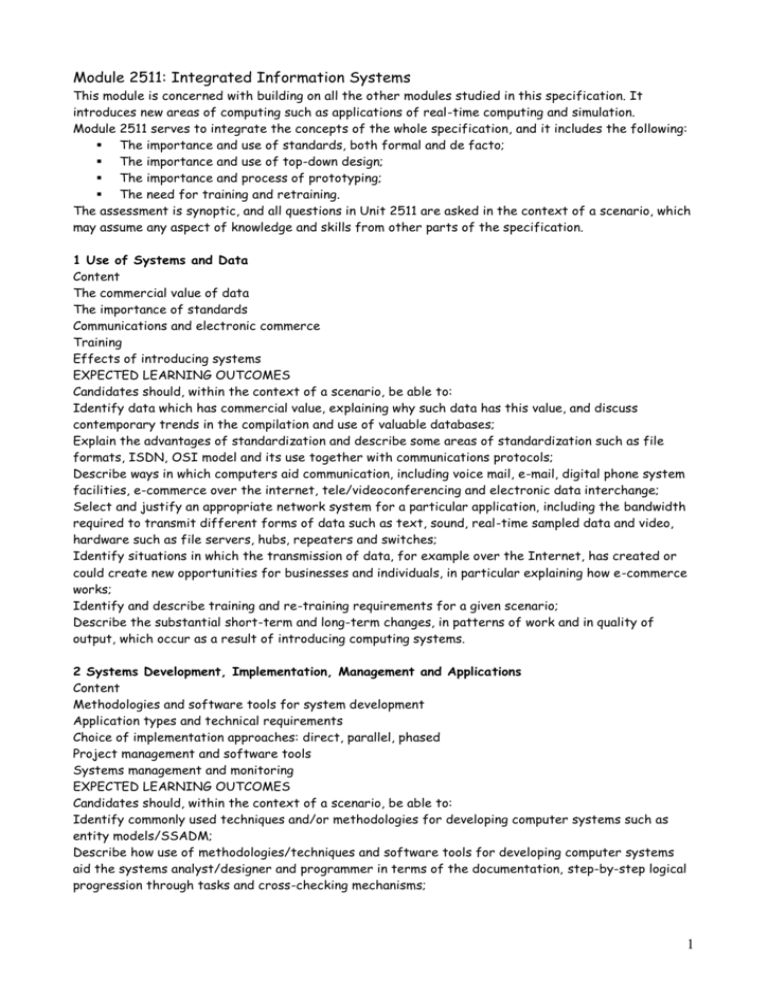
Module 2511: Integrated Information Systems This module is concerned with building on all the other modules studied in this specification. It introduces new areas of computing such as applications of real-time computing and simulation. Module 2511 serves to integrate the concepts of the whole specification, and it includes the following: The importance and use of standards, both formal and de facto; The importance and use of top-down design; The importance and process of prototyping; The need for training and retraining. The assessment is synoptic, and all questions in Unit 2511 are asked in the context of a scenario, which may assume any aspect of knowledge and skills from other parts of the specification. 1 Use of Systems and Data Content The commercial value of data The importance of standards Communications and electronic commerce Training Effects of introducing systems EXPECTED LEARNING OUTCOMES Candidates should, within the context of a scenario, be able to: Identify data which has commercial value, explaining why such data has this value, and discuss contemporary trends in the compilation and use of valuable databases; Explain the advantages of standardization and describe some areas of standardization such as file formats, ISDN, OSI model and its use together with communications protocols; Describe ways in which computers aid communication, including voice mail, e-mail, digital phone system facilities, e-commerce over the internet, tele/videoconferencing and electronic data interchange; Select and justify an appropriate network system for a particular application, including the bandwidth required to transmit different forms of data such as text, sound, real-time sampled data and video, hardware such as file servers, hubs, repeaters and switches; Identify situations in which the transmission of data, for example over the Internet, has created or could create new opportunities for businesses and individuals, in particular explaining how e-commerce works; Identify and describe training and re-training requirements for a given scenario; Describe the substantial short-term and long-term changes, in patterns of work and in quality of output, which occur as a result of introducing computing systems. 2 Systems Development, Implementation, Management and Applications Content Methodologies and software tools for system development Application types and technical requirements Choice of implementation approaches: direct, parallel, phased Project management and software tools Systems management and monitoring EXPECTED LEARNING OUTCOMES Candidates should, within the context of a scenario, be able to: Identify commonly used techniques and/or methodologies for developing computer systems such as entity models/SSADM; Describe how use of methodologies/techniques and software tools for developing computer systems aid the systems analyst/designer and programmer in terms of the documentation, step-by-step logical progression through tasks and cross-checking mechanisms; 1 Discuss the technical requirements of a system necessary to implement a range of different computer applications, including hardware, operating systems, communications, interface software, and other utility software; Explain the need to provide appropriate response times for different applications, in the context of a scenario, and its implications for hardware, software and data structures; Select, plan and justify appropriate implementation approaches for a range of different applications such as: parallel, phased, pilot, direct; Describe the process of project management and give examples of different aids a project manager may use to plan and monitor a project such as Gantt charts, critical path analysis, Identifying the benefits and drawbacks of each; Discuss, giving examples, the requirement for effective project management for the implementation of different computing applications, including the benefit of using project management software; Discuss the implications of managing, monitoring and maintenance of systems, including the need for up-to-date documentation, software audit, quality control and management and hardware updates. 3 Simulation and Real-time Processing Content Applications of real-time computing The feedback loop; input and output; sensors and actuators The use of robots Variation of parameters and conditions; time steps Processing requirements Advantages and limitations of simulations EXPECTED LEARNING OUTCOMES Candidates should, in general and within the context of a scenario, be able to: Describe a range of real-time applications; Explain the use of sensors and actuators for visible, tactile, audible and other physical signals; Demonstrate an understanding of the use of robots in a variety of situations such as the manufacturing process or hazardous environments; Explain the reasons for simulation, such as to change time-scales and/or save costs and/or avoid danger; Describe the uses of simulation to assist in design, to make predictions, to test hypotheses; Describe a simulation and its variables, the facility to vary conditions and observe the sensitivity of results to such variations; Explain the large processing requirements of some such systems and hence recognize the need for parallel architectures; Discuss the advantages of simulation in testing the feasibility of a design; Discuss the limitations of simulation, especially where the situation is subject to random events. 4 Common Network Environments, Connectivity and Security Issues Content Data transmission Network components Use of networks to support hyperlinking systems such as the world wide web (WWW) Common network environments Issues of confidentiality Encryption and authentication techniques EXPECTED LEARNING OUTCOMES Candidates should, in general and within the context of a scenario, be able to: 2 Describe methods (analogue and digital) used to organise LANs and WANs, and typical rates of data transmission associated with different topologies and methods; Demonstrate awareness of different media for transmitting data and their carrying capabilities; Explain the different purposes of network components, including switches, routers, bridges and modems; Discuss the demands of a nomadic network environment such as mobile phones; Discuss common network environments, such as intranets, the Internet and open networks, their facilities, structure and ability to exchange information using appropriate software and techniques; Describe the purpose of hypertext linking, identifying the means by which it can be achieved such as hotwords/links, buttons and hypertext mark up language (HTML); Describe the basic features of mark up languages; Describe the facilities provided by electronic mail systems (including voice mail) such as composing, responding, filing, copying, attaching, sending on and multiple recipients, and explain situations in which they are appropriate; Discuss the problems associated with matching human and device speeds; Describe how a network environment affects the user interface provided; Discuss the problem of maintaining confidentiality of data on an open network and how to address this problem; Explain the need for encryption, authorization and authentication techniques (candidates will not be expected to know any specific method in detail); Explain that distribution of a network can have implications for both data and responsibility; Describe the uses of distributed databases, and understand the advantages and limitations. 3

